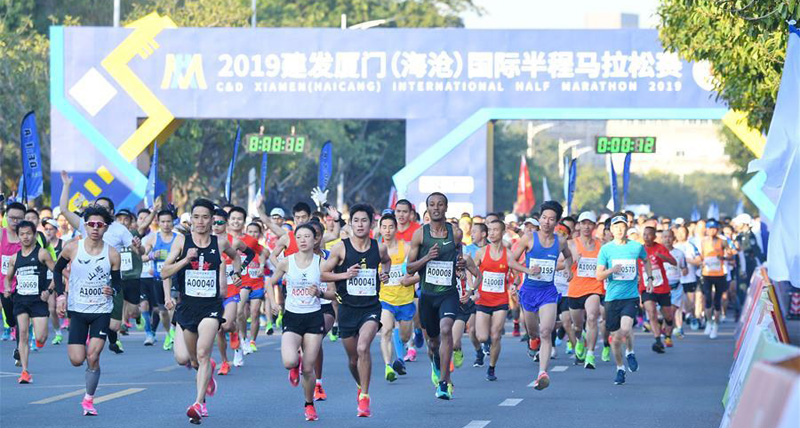Transportation network
chinadaily.com.cn| Updated: May 16, 2019
1.Convenient air transportation
Xiamen Air Harbor is one of the six large airports on the Chinese mainland. It has formed a global flight routes network covering major cities on the Chinese mainland, Hong Kong, Macao, and Taiwan, European, North American, Oceania, and Asian countries and regions. The harbor applies to the 144-hour visa-free transit policy for foreign visitors from certain countries.
The harbor currently has 171 urban flight routes, including 35 international routes, of which six are intercontinental routes reaching US, Canada, Australia and the Netherlands, and 28 international and overseas cities covering Hong Kong, Macao, Taipei and Kaohsiung.
The Xiang’an International Airport that is still under construction and is expected to have the throughput capacity of 85 million passengers by 2025 and to become a significant international airport and regional air pivotal port in China's South-East coastal areas.
2.Well-developed marine transportation hub
Xiamen is one of China’s four international shipping centers, and a logistics center city in southeast area. Xiamen Port has a total of 146 container shipping routes, including 92 international shipping routes (57 shipping routes of Maritime Silk Road countries). It has 165 berths for the transport of means of production, of which 76 berths are for 10,000-ton and above ships. Xiamen Harbor is a comprehensive transportation hub for direct communication between the mainland and Taiwan. Passengers that Xiajin Xiaosantong (allowing postal, transportation and trade between Fujian and the islands of Kinmen and Matsu) ferries served in 2018 hit a new record reaching 1.75 million, accounting for 17 percent of cross-Straits visitors.
3.Silk Road marine transportation
Fujian province takes advantage of its status as a core area of the Maritime Silk Road, and the Xiamen Port to create a Silk Road marine transportation brand that complements the China-Europe freight rail service network. It builds a Silk Road marine transportation alliance, makes related service standards, deepens cooperation with international ports, creates a dense shipping route network, and establishes a grand foreign trade and logistics channel that combines the land and sea and connects the East and West.
4.Efficient road transport
The expressway networks of Xiamen and the midwest area of Chinese mainland are connected seamlessly by Shenyang-Haikou Highway, Xiamen-Chengdu Highway, Xiamen-Shanxian Highway, and urban expressways.
Railways between Yingtan and Xiamen, Fuzhou and Xiamen, Xiamen and Shenzhen, and Longyan and Xiamen have been put into use, which makes it possible for passengers to arrive in Shanghai in five hours, Shenzhen in three hour, and Fuzhou in two hours. Currently, a high-speed railway between Fuzhou and Xiamen and an intercity rail transit are under plan.
5.China-Europe freight rail service network
Xiamen is the only city that realizes the seamless connection of the Silk Road Economic Belt and the Maritime Silk Road. It launched an international cargo train to Europe, Middle Asia and Russia, reaching 12 countries and 34 cities. Via the sea-rail transportation routes, commodities are able to be delivered between Hong Kong, Taiwan, South Korea, Southeast Asia, and Europe. An international logistics channel linking China and Europe, China and Asia, as well as Russia has been formed. The China-Europe route passes by Malaszewicze, and three sub-routes to Hamburger, Duisburg, and Budapest are extended from it.
6.Subway planning
According to Xiamen’s rail traffic planning approved by the central government, the city will have three metro lines by 2020 and will also accelerate the construction of Metro Line 4 and 6, with a total length of 198 kilometers. The city will witness the rapid development of its subway traffic network. The Metro Line 1 has currently started operation.



 play
play